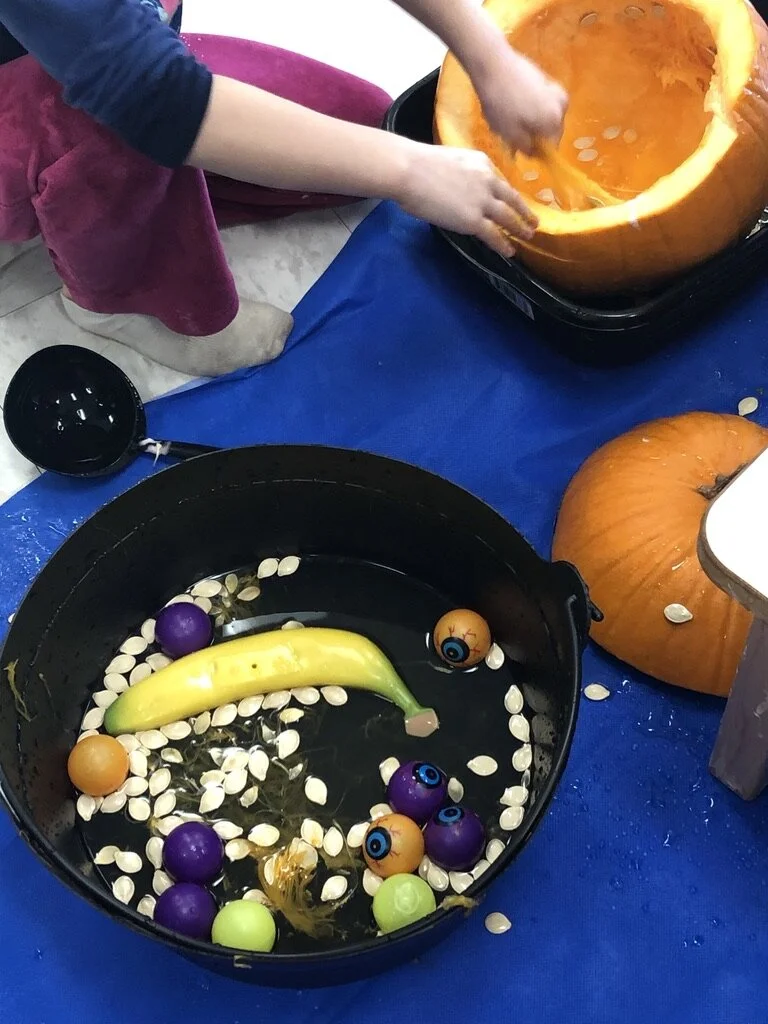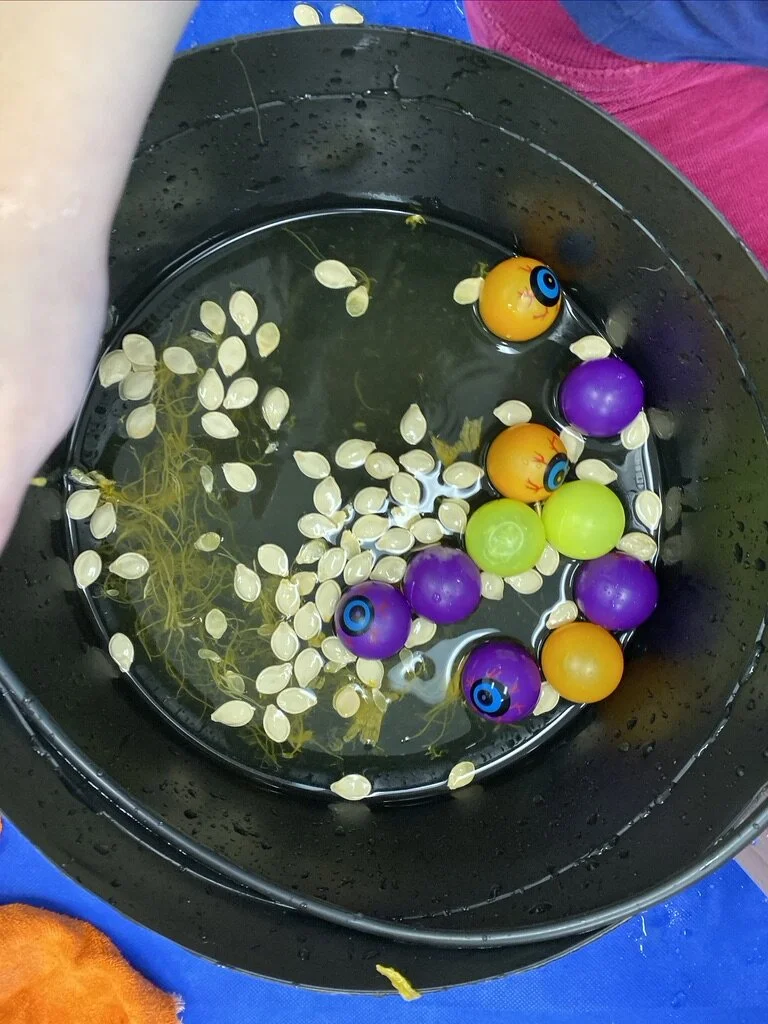Just Add Water
On a crisp fall morning, a little pumpkin sat alone, unexplored, and ignored on a cold, grey table. The children were engaged with water play, foam play, toys, and puzzles while the little pumpkin quietly sat in a corner . . . overlooked.
So we moved the little pumpkin next to the water table to see how the children playing there would incorporate the pumpkin in their play, yet the children didn’t take notice of the little pumpkin. Out of curiosity, and as a last attempt with the invitation to play, we decided to just add water and a ladle into the cavity of the pumpkin. A child quickly grabbed the ladle and started to stir the seeds and water. He scooped and poured the mixture back into the pumpkin and then into the water table and finally into a cauldron.
Soon other children joined in to create a concoction of different items or what they called a “potion.” The pumpkin guts were mixed with shaving foam, google eyes and plastic food from the kitchen area. The exploration went on for a good thirty minutes.
The addition of water introduced children to different textures - slimy, slippery, mushy. The combination of water, shaving foam, pumpkin seeds and guts was a fun way for the children to learn about the different properties of those ingredients and understand what happens when they mix!
So why is water play so important?
Not only does water play allow for children to learn through their senses, they learn concepts of math such as volume. For example, “How many cups does it take to fill a pumpkin?”
Water play also introduces young learners to scientific concepts such as making predictions about which ingredients dissolve in water and what objects sink or float.
Additionally children learn social skills through water play. They learn how to take turns with the materials. Water play encourages conversations about their concoctions and experiments.. Children ask each other questions and engage in creative dialogue with adults when responding to statements like, “I wonder what would happen if . . .”
Here are a few ideas on how you can make water exploration a part of your child’s everyday play experience:
Set up a “potion” lab. Add a couple of items from your pantry. Invite your child to mix the ingredients with water. Use items that don’t mix like water and oil.
Make MUD! Mix dirt and water.
Place ice and snow in your sensory bin. Add warm water and a choice of “tools” for melting the ice/snow.
Set up a colour-changing water bin, and mix colours in water. You can do this by adding food colouring to water in small containers. Add one colour at a time to the bin.
Mix shaving foam with water
This was completely unplanned and unintentional from our perspective. Something as simple as adding water can create open-ended possibilities for children to explore and experiment with all of their senses. We haven’t met a child yet who isn’t intrigued by water!
Written by Lorena Arauz (Parent Support Coach) & Brooke McGuire (Parent Support Coach)
“We’re putting eyes in!”
“I’m helping you.”
“We’re making yucky potions.”
For more information, visit https://www.naeyc.org/resources/blog/importance-sand-and-water-play






